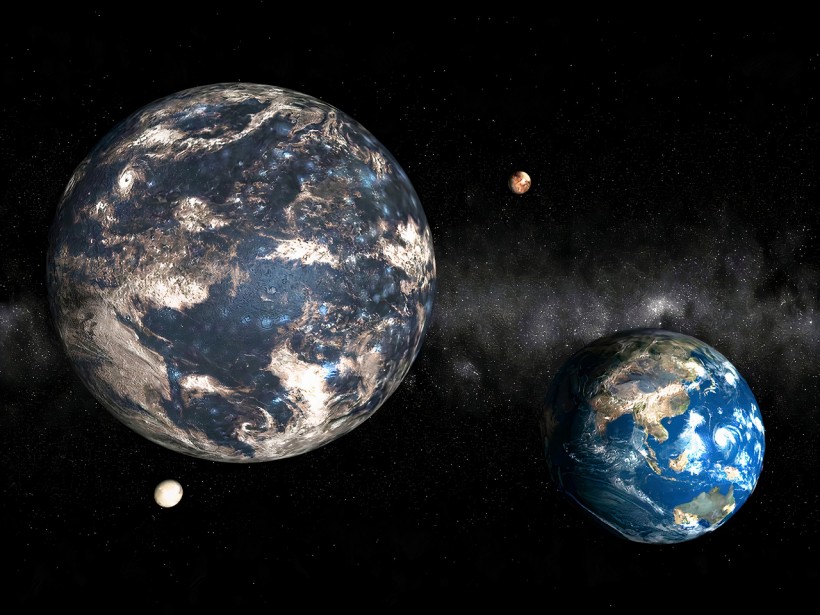Japan's Subaru Strategic Program announced the first exoplanet of their infrared spectrograph IRD on the Subaru Telescope discovered. This planet is called Ross 508b, a super-Earth about four times more massive than Earth.
Per Science Times' last report, super-Earth Ross 508b is just 36.5 light-years away and is orbiting in the habitable zone of its red dwarf star. Interestingly, it only takes 10.75 days for the super-Earth to complete one revolution compared to Earth which has 365 days in a year.
Super-Earth Ross 508b Might Have Retained Water on Its Surface
Exoplanet Ross 508b orbits an M-type star and is 0.05366 AU away from it, which is considered inside the star's habitable zone. NASA said that this could mean that such a planet may be able to retain water on its surface,w which is an important target for future studies that aim to look for signs of life around low-mass stars.
Discovery Alert!
A recently discovered exoplanet skims in and out of its star's habitable zone. It's 37 light-years from Earth and about four times our planet's mass, making Ross 508b a super-Earth. A year there, one orbit, takes just 10.8 days! https://t.co/qmEDhIuS3A pic.twitter.com/MW7Cap45If— NASA Exoplanets (@NASAExoplanets) August 3, 2022
About three-quarters of the stars in the Milky Way galaxy are red dwarfs and exist in large numbers near the Solar System, which makes them targets to explore more about life on nearby exoplanets. Studying them is a bit challenging because they are cooler and dimmer than other types of stars.
The infrared spectrograph IRD on the Subaru Telescope (IRD-SSP) was specifically developed to look for red dwarf exoplanets, and it has been over 14 years since it was developed. Professor Bun'ei Sato from the Tokyo Institute of Technology and the principal investigator of IRD-SSP said that they continue their development and research to look at more planets like Ross 508b.

Super-Earth Ross 508b Orbiting in the Habitable Zone of A Red Dwarf Might Possess Some Signs of Life
Discovering the super-Earth Ross 508b gives hope that life may be sustainable on other planets. But it is still a long way to prove that life could indeed exist there, as there will be a long haul of confirmation to be done. Ultimately, finding life on other planets still has a long way to go.
Earth-like Exoplanets Found So Far
Earth is the only planet in the universe where humans can live and so far scientists have not found any other planet exactly like Earth that can host life. However, Earth-like planets have been discovered in the past decades that make it look like Earth.
According to The Planetary Society, the qualities that make an exoplanet Earth-like is its rockiness, which resembles Earth. Research suggests that other galaxies could be full of sibling Earths and that there may be one Earth-like planet for every Sun-like star in the Milky Way galaxy alone.
The first exoplanets were discovered in the 1990s, and it is impressive how scientists uncovered the distant worlds in such a short time with the help of space-based and ground-based telescopes.
There are over 5,000 confirmed exoplanets and thousands of other candidates today.
A small number of them are Earth-like planets, including the following:
- Kepler-186f
- Kepler-452b
- TRAPPIST-1
- GLIESE 667CC
- Kepler-22b
- Kepler-69c
- Kepler-62f
- Kepler-442b
- Kepler 1649c
- Proxima Centauri b
RELATED ARTICLE: Super-Earth Exoplanet 4 Times Bigger Than Our Planet Found 36.5 Light-Years Away; Is It Habitable?
Check out more news and information on Space in Science Times.


![Humans Will Go Extinct on Earth in 250 Million Years; Mass Extinction Will Occur Sooner if Burning Fossil Fuels Continues [Study]](https://1721181113.rsc.cdn77.org/data/thumbs/full/53373/89/56/50/40/humans-will-go-extinct-on-earth-in-250-million-years-mass-extinction-will-occur-sooner-if-burning-fossil-fuels-continues-study.jpeg)











